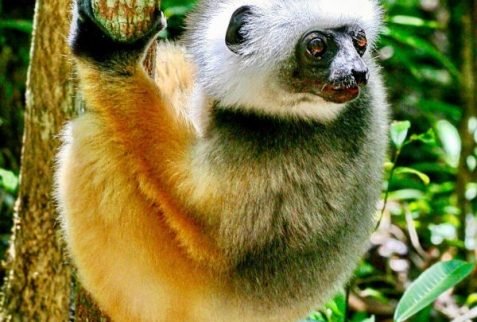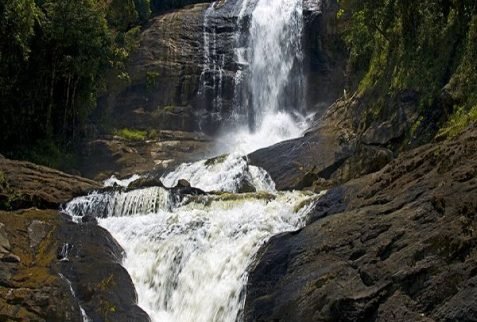Zahamena National Park
UNESCO World Heritage site since 2007, The entrance to Zahamena National Park is located approx. 200 km (8 hours) north of Moramanga, about 25 km east of Alaotra lake. The two 2/3 of the protected area is not open to the public. The isolated position of this area has contributed to its conservation but the current human pressure of the Sihanaka and Betsimisaraka people constitutes the main threat to Zahamena.
The climate is humid, with moderate temperatures and showers all year round. The park is divided into two areas (the western one and the eastern one), which are partially separated by a corridor which includes several villages. It is still a little-known area and naturalists are currently conducting surveys to improve scientific knowledge about biodiversity found here.
The landscape is very hilly, with several steep valleys drained by rivers, some of which flow into Lake Alaotra.
At low altitude, the dense evergreen wet forest has trees that reach a height of over 20 m. The middle levels are dominated by bushes and secondary forests covered with tree ferns and pandanus. In the higher areas we find a wet forest that passes over a dense mountain forest. Zahamena National Park is home to an incredibly high biodiversity, in fact one of the highest in Madagascar.


Fauna
The park hosts 62 species of amphibians, 48 species of reptiles, 13 species of lemurs (indri, varecia variegata, diademed sifaka), and 109 species of birds including 67 endemic to Madagascar. You will also find many lemurs, bats and butterflies always more colorful than each other.
Flora
The flora is exceptional, 700 species with an endemicity rate of 90%, including 151 species of pteridophytes, 60 species of orchids, 22 species of palm trees, 10 species of pandanus, 511 species of woody plants.
Circuits
The visit can be done through three circuits which each offer surprising encounters, such as daytime lemurs, or the possibility of camping by the edge of a natural swimming pool, or why not by the waterfall of Andranomitsangana. The park has a heterogeneous population but predominantly Betsimisaraka and Sihanaka, and collaborate closely with the surrounding villages for joint conservation actions.


